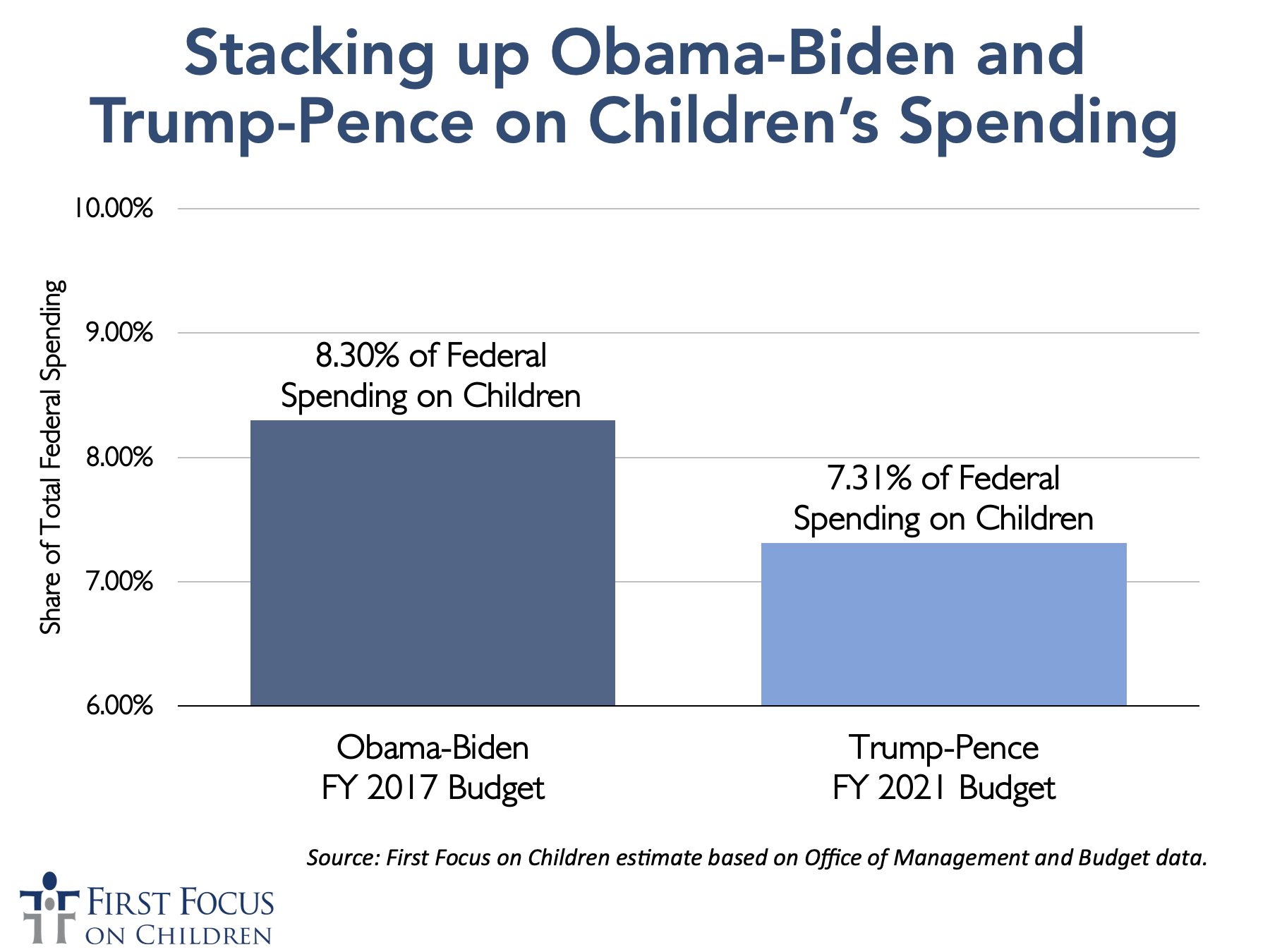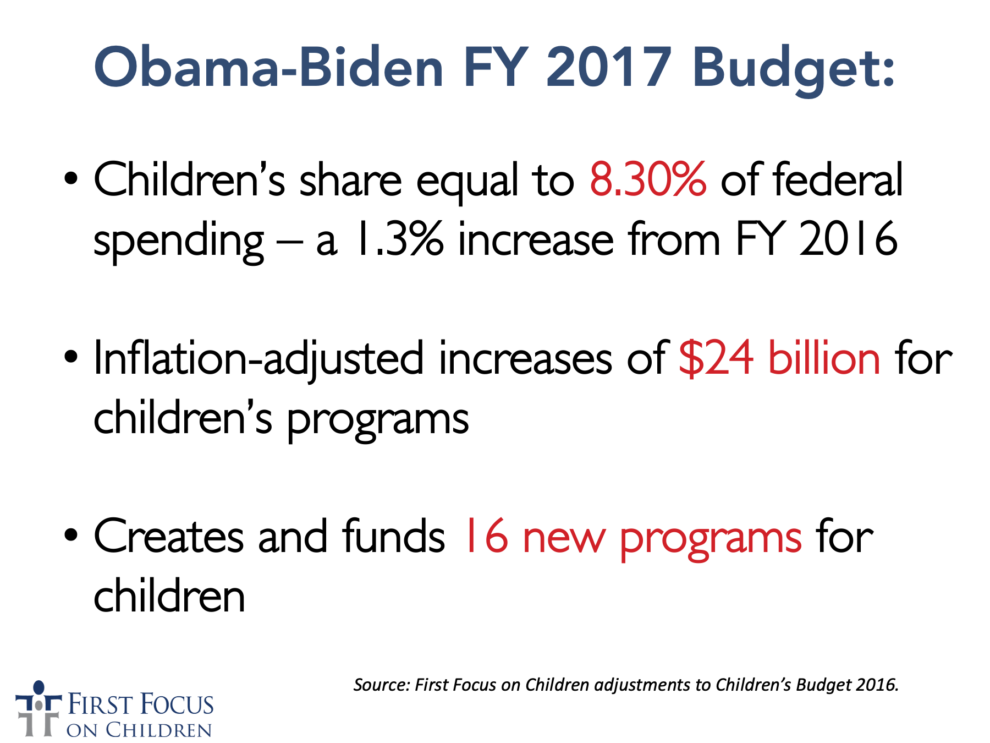
With the election fast approaching, we analyzed the established track records of each candidate’s spending on children. President Donald Trump and Vice President Mike Pence produced a budget as recently as February for Fiscal Year (FY) 2021, and former Vice President Joe Biden was part of the Obama-Biden Administration’s budget for FY 2017. Both of these documents offer a window into what we can expect for children when either starts his presidential term on January 20, 2021.
Children’s Budget 2020 offers a deep dive into how the Trump-Pence FY 2021 budget would affect kids. We found that were his policies to be enacted, the share of federal spending on children would drop about 2% lower than kid’s spending in FY 2020, which was 7.48% of the budget, to 7.32% (adjusted for comparison, the share would be about 7.31%). President Trump’s policies would cut spending for kids by an inflation-adjusted $21 billion, which is the result of eliminating or consolidating into block grants 59 children’s programs in addition to general cuts to other programs.

Although Vice President Biden has not been in the position to produce his own budget, he was a member of the Obama-Biden Administration, so it is informative to take a look at President Obama’s last budget request in FY 2017. We did a deeper breakdown of that budget in Children’s Budget 2016, in which we found President Obama’s FY 2017 budget would spend 8.11% of the budget on children. However, a lot has changed in the past four years: we have much more data about how federal dollars are spent, we’ve seen programs come and go, and we’ve seen changing demographics increase spending on some programs while decreasing it on others.

Combining the spending estimates from Children’s Budget 2016 with the more recent data we have in Children’s Budget 2020, we adjusted both estimates to reflect an apples-to-apples comparison. The result: the Trump-Pence FY 2021 budget allocated 7.31% of federal spending toward children, while the Obama-Biden FY 2017 budget allocated 8.30% of federal spending toward children.
The 8.30% in the Obama-Biden FY 2017 budget reflected an increase in the share of children’s spending of 1.3% between FY 2016 and FY 2017, or 0.21 percentage points. In inflation-adjusted dollars, the Obama-Biden FY 2017 budget increased children’s spending by nearly $24 billion. The increase was fueled by 16 new programs proposed in the budget, slightly offset by a few programs being consolidated or eliminated.

While a roughly 1 percentage point difference doesn’t seem huge, it actually adds up pretty quickly when you’re talking about a $4.7 trillion budget. If President Trump had mirrored President Obama’s budget, children would have received an additional $46 billion in the FY 2021 budget request.
It’s important to note that Vice President Biden may not emulate his old boss, and if he’s elected, we’ll see what happens in his FY 2022 budget. That being said, this comparison does give both candidates a goal to work toward. President Obama demonstrated how to increase, rather than decrease, the share of federal spending toward kids in his FY 2017 budget.
Both President Trump and Vice President Biden should live up to the standard set in FY 2017 and propose policies that return the children’s share of federal spending to at least the level requested by President Obama then – an 8.30% share. Ideally, though, the next president will request an even greater share of spending to address the unmet needs of today’s children, especially in light of the COVID-19 crisis.
The next president’s budget must reverse the trend of children’s funding and set the children’s share of federal spending on an increasing, not decreasing, trajectory.